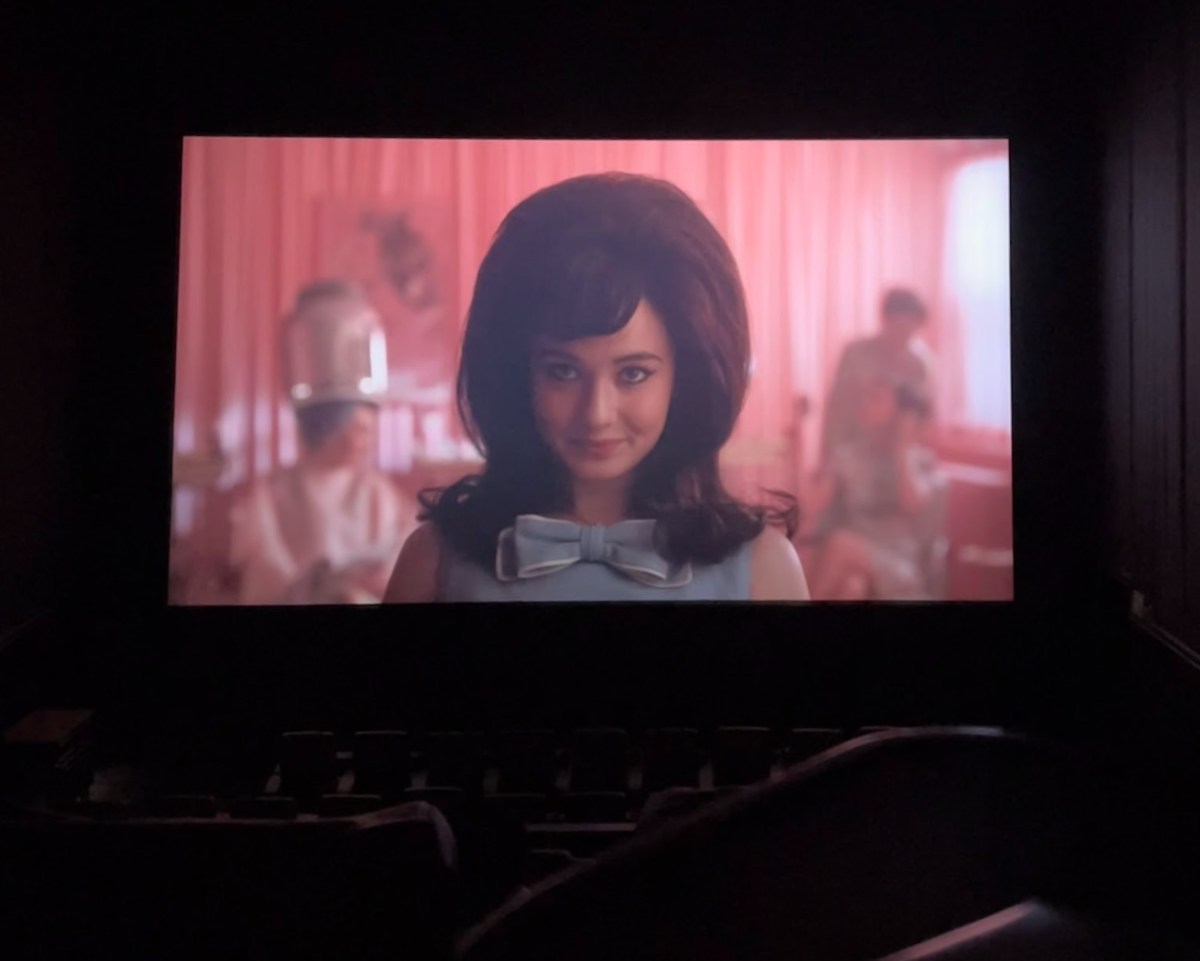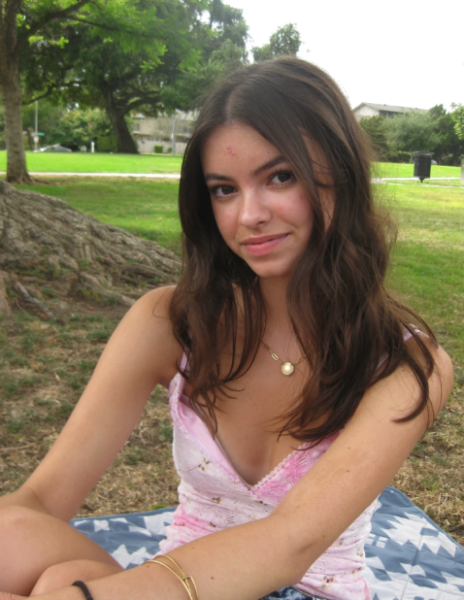Ostentatious outfits immortalized in photographs. Smokey eye makeup. Layers of exquisite fabric. Beneath the rhythmic tunes of Elvis lurks a much less glamorous tale of love than is often portrayed in the media.
The biopic “Priscilla,” based on the 1985 memoir “Elvis and Me,” depicts the relationship between Elvis and Priscilla Presley through the charcoal-lined eyes of the superstar’s teen muse.
The movie begins in the late 50s when Priscilla, subtly featured in an innocently pale pink cardigan emphasizing her 14-year-old youth, is invited to attend a dinner party hosted by the already famous 24-year-old Elvis Presley. After much persuasion, Priscilla’s parents allow her to go. Thus begins the journey of Priscilla and Elvis’s love story which, coincidentally, lasted all of 14 years.
Academy-award winning director Sofia Coppola maintains a dreamy, pale-toned aesthetic while discarding the rose-tinted glasses Baz Luhrmann’s 2022 “Elvis” and many others don in their retelling of Priscilla and Elvis’s romance. It’s careful to not cross into romanticization. “Priscilla” subtlety exposes the much darker truth that can only be associated with a romance marked by such an age difference and imbalanced power dynamic.
Seeing Elvis through new eyes post #metoo exposes the disturbing reality that Hollywood’s glamor isn’t exempt from criminal, predatory behavior. Grooming doesn’t discriminate, not even against a backdrop of revolutionary talent and beloved superstars, a fact that becomes brazenly obvious to the audience although it’s ignored by the film’s characters.
The film tip toes the line between romanticization and authentic portrayal of the dark nature of the couple’s relationship. It clearly depicts Priscilla’s adoration and love for Elvis, not hesitating to use pale pinks and blues as well as lace and frilly gowns associated with a love-struck fairytale aesthetic. Yet it also just as clearly makes it known that although Priscilla views their relationship as one to romanticize, we should not.
Intimacy and dramatic irony are at the film’s core. Coppola artfully conveys the naivety that largely defined Priscilla’s perspective of Elvis as the viewers embark on the uncomfortable-to-watch transformation as Priscilla becomes Elvis’s muse and eventually wife. Pricilla’s soft spoken demeanor, her modest clothing that contrast the attire of the other women in Elvis’s life, the focus on her high school trajectory, and the height difference between Priscilla and Elvis all illustrate their difference in maturity and the disturbing nature of their romance. It’s difficult to leave the theater without a deepened appreciation for the power of subtly.
The film tip toes the line between romanticization and authentic portrayal of the dark nature of the couple’s relationship. It clearly depicts Priscilla’s adoration and love for Elvis, not hesitating to use pale pinks and blues as well as frilly lace gowns associated with fairytale aesthetic to underscore this. Yet it also just as clearly lets it known that although Priscilla views their relationship as one to romanticize we the audience should not.
“Priscilla” is accessible, providing multiple access points of relatability. I saw this in my mother’s frown when Elvis wanted to take a break when Priscilla was nearly due to have their baby. Or in the parallels between Priscilla and the story of my grandmother who was married too young to an older man before immigrating to a novel country and way of life.
The biopic pictorializes the true dynamic of the age gap many have wielded “different times” and “changed values” to excuse. Although “Priscilla” is not the first to portray the intersection of romance and manipulation and all the messiness in between, it does so through the lens of femininity. “Priscilla” embraces beauty and femininity, using it to expose what a pretty facade can hide.



